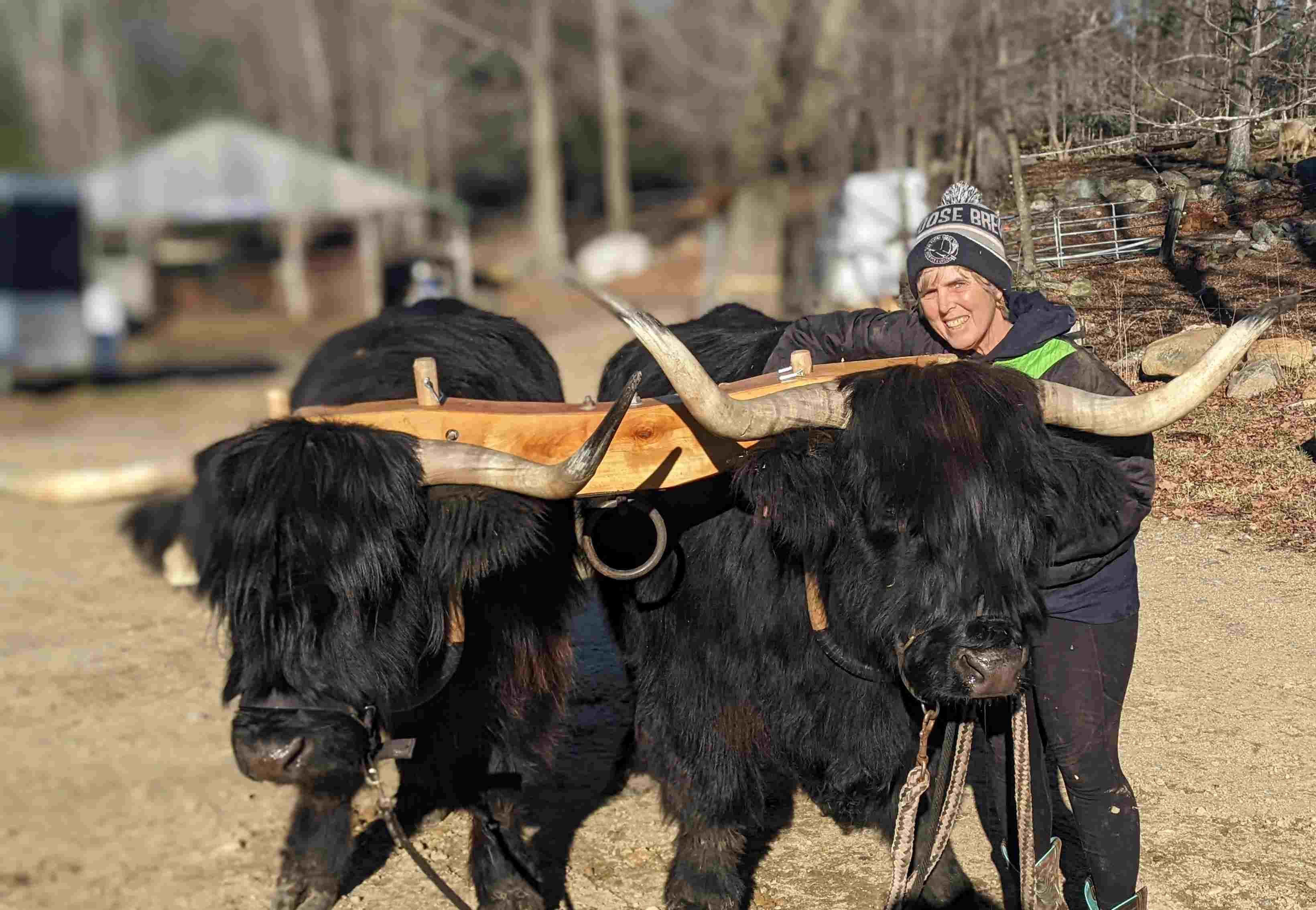Lucky Break for Two Bull Calves
posted on
July 25, 2025

Molly Potter and Rose DeFreitas are teaching calves Ben and Jerry to work together in a yoke at Miles Smith Farm. Sign up for a session and you can bottle-feed these adorable calves. If you'd like to be enchanted by these calves, then schedule a time to bottle-feed them here.
Ben finished eating and struggled against his halter to get to Jerry's bottle of milk formula. Ben butted my leg and grabbed a mouthful of my shirt. Ben and Jerry are bull calves born on Huckins Farm in New Hampton. My Miles Smith Farm in Loudon and Huckins Farm both raise cattle, but Huckins is a dairy operation, while my farm specializes in raising beef cattle. The two operations are different beasts.
Beef cattle are bred to have large muscles and small udders. Beef cows produce just enough milk for one or two calves (if they have twins), and the calf can nurse on its mother for six months. Typical beef breeds are Angus, Hereford, and Scottish Highland.
On a dairy farm, all of the cow's energy goes into her udders. Their bodies are lean, and their udders are large. Typical dairy breeds include Holstein, Jersey, and Guernsey. Like any mammal, they produce milk only after they have given birth.
Dairy Calves
Dairy calves are taken from their mothers shortly after birth and are fed formula because:
- Dairy calves that are allowed to nurse often develop scours, a potentially deadly disease, from overeating.
- Nursing calves can transfer bacteria into the cow's udder, contaminating the milk and causing mastitis, a painful and difficult-to-treat disease.
The dairy cow's job is to produce milk for humans, not for her calf.
Female calves (heifers) are valued as eventual milk producers. Male calves are somewhat inconvenient to the dairyman. Very few bull calves are kept for breeding, but most of them are fattened up to produce meat after they are 2 years old.
Ben and Jerry could have a brighter future. A week after they were born on Huckins Farm, I brought them to my farm. After birth, they'd been bottle-fed colostrum, a nutrient-rich fluid that provides antibodies to the calf's immune system. We bottle feed them milk formula twice a day, and instead of becoming beef, they will learn to work in a yoke as "working steers."
Counselor-In-Training
"I like trying new things. I want to be a vet but wasn't sure I'd like working with farm animals until I came to Miles Smith Farm Cow Camp," Camp counselor-in-training Rose DeFreitas recently told me.
Despite being stepped on, kicked, and getting dirty, Rose has attended cow camp for the last three years. This year, she's training calves Ben and Jerry to work as a team. She yokes them up and teaches them to follow simple commands, such as "gee" (right) and "haw" (left). "They're sweet, I love them, and they're the right size," Rose said. "I hope I can show them at the Sandwich Fair."
Ben and Jerry will continue to be bottle-fed until early September. If you'd like to be enchanted by these calves, then schedule a time to bottle-feed them here.
The Farmer
Carole Soule and her husband retired from full-time farming in 2024 but still raise and sell cattle. Carole, with the help of children participating in her Critter Camp, is currently training five working steer pairs.



